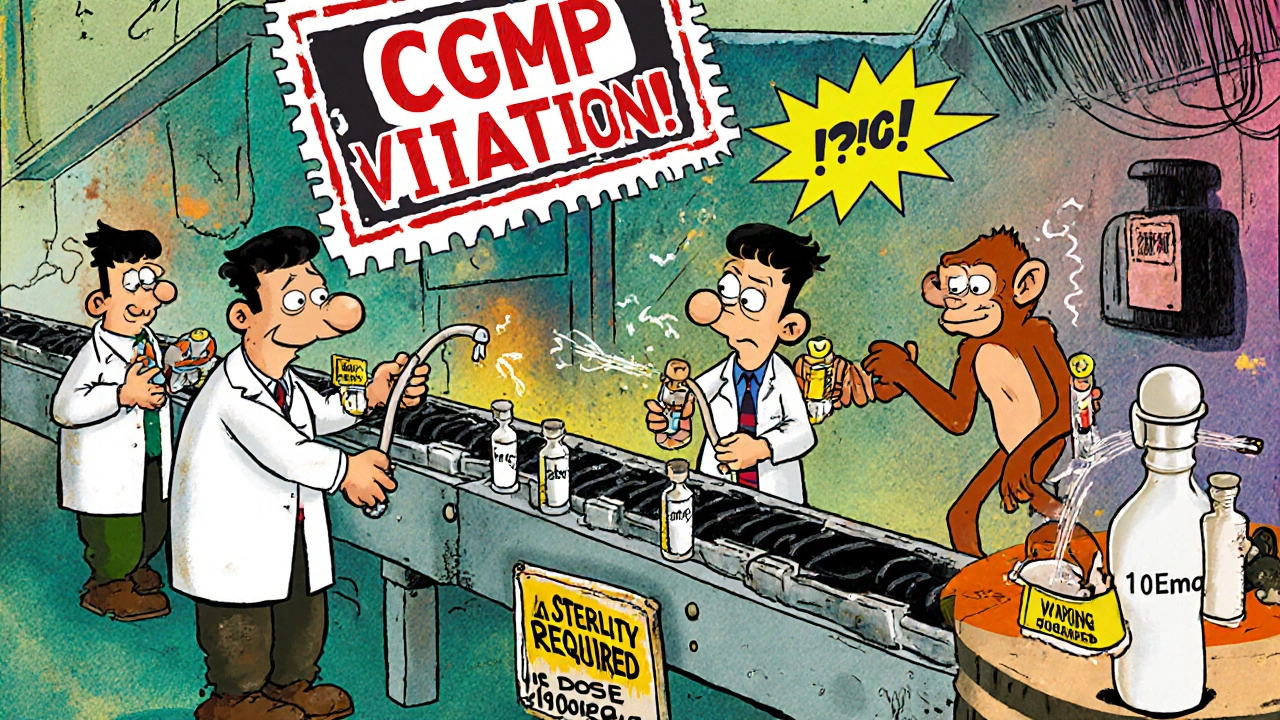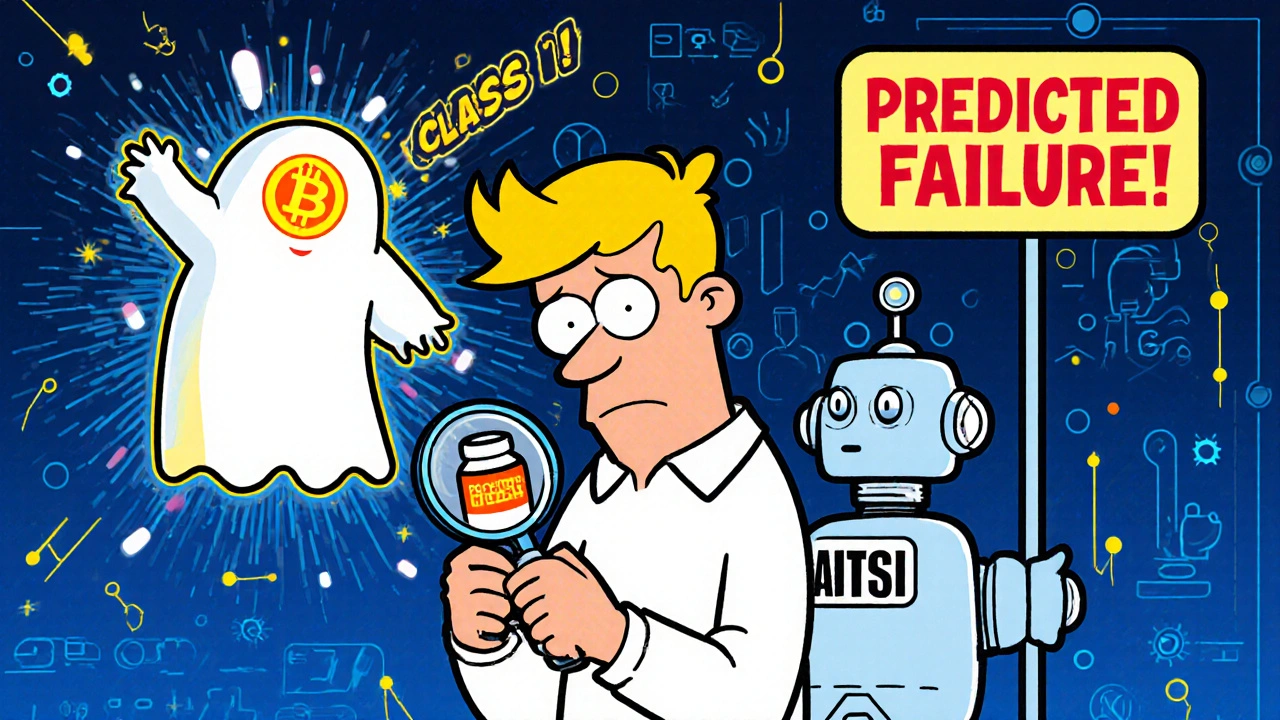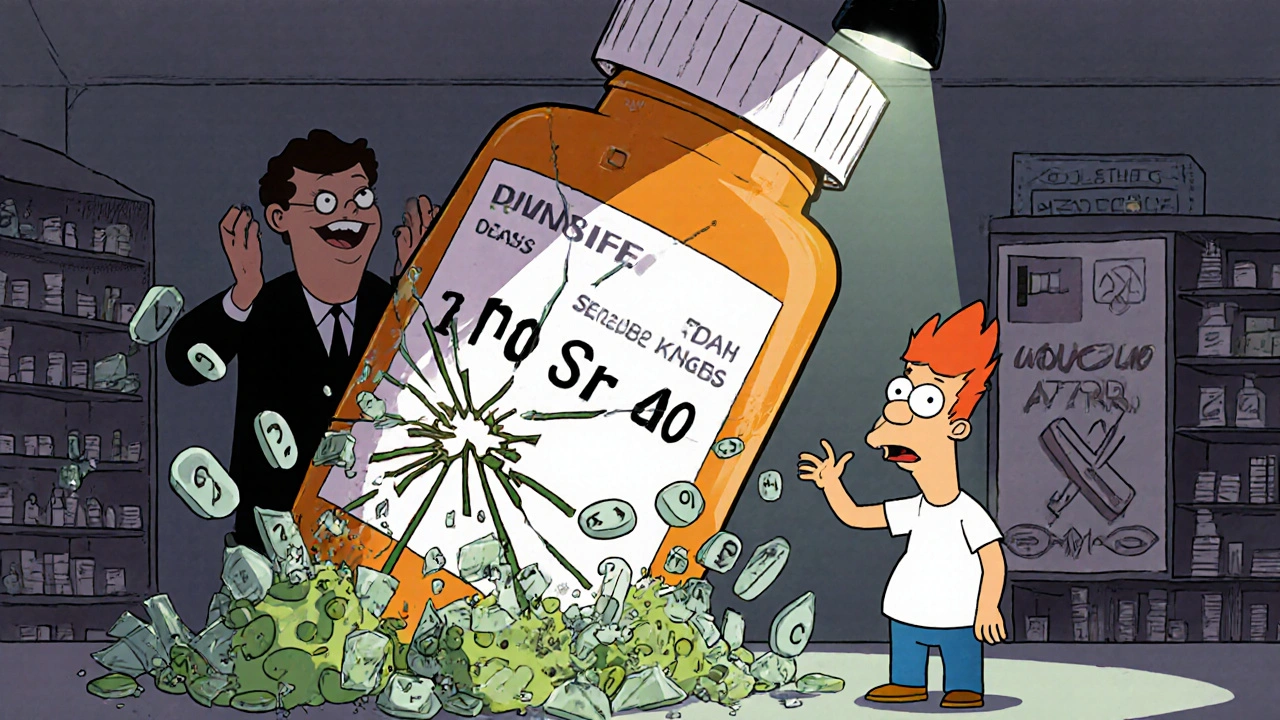When you pick up a generic pill from the pharmacy, you expect it to work the same as the brand-name version - safe, effective, and consistent. But what happens when that trust breaks down? In 2024, nearly 350 drugs were recalled in the U.S., and more than 85% of them were generic medications. Most of these recalls didn’t happen because the drug didn’t work - they happened because something was wrong in the factory. Something hidden. Something that could have killed someone.
What Actually Causes a Generic Drug to Be Recalled?
It’s not one big mistake. It’s a chain of small failures. The most common trigger? Sterility issues. About 37% of all drug recalls in the past decade were because pills or injections were contaminated with bacteria or mold. Imagine a vial of insulin or a heart medication that’s supposed to be sterile - but instead, it has live microbes inside. That’s not just unsafe. It’s deadly. Patients with weakened immune systems, like those on chemotherapy or after organ transplants, can die from an infection caused by a contaminated shot.
Another big one: labeling errors. In July 2024, ICU Medical recalled potassium chloride injections because some vials were labeled as 10 mEq when they actually contained 20 mEq. That’s double the dose. A single wrong injection can stop a heart. This wasn’t a glitch. It was a failure in quality control at the packaging line.
Then there’s potency problems. If a generic blood pressure pill only has 70% of the active ingredient it’s supposed to have, it won’t work. Patients think they’re protected - but they’re not. The FDA requires all drugs to contain between 90% and 110% of the labeled amount. When they fall outside that range, it’s a recall trigger.
And contamination? Particles. Glass shards. Metal flecks. These aren’t rare. They account for 12% of recalls. One 2023 recall involved generic metformin with visible fibers in the tablets. Patients reported swallowing tiny black specks. No one died - but no one should have to wonder if their medicine is safe to swallow.
Class I, Class II, Class III: What the FDA Really Means
The FDA doesn’t just say “this drug is recalled.” They rank them. Three levels. And the difference between them is life or death.
Class I recalls are the most serious. They mean there’s a reasonable chance the drug will cause serious harm or death. These include contaminated injectables, wrong-dose pills, or drugs with missing active ingredients. In 2024, Class I recalls made up about 55% of all drug recalls. That’s more than half.
Class II recalls are for drugs that might cause temporary or reversible harm. Think: labeling mistakes that don’t change the dose, or drugs stored at the wrong temperature for a short time. These still matter - but they’re not immediate emergencies. About 32% of 2024 recalls fell into this category.
Class III recalls are for minor issues. Maybe the bottle says “take with food” but it should say “take on an empty stomach.” Or the expiration date is smudged. These drugs won’t hurt you. But they break the rules. Only 13% of recalls are Class III.
Here’s the thing: Class II is often the warning sign. If a company has a Class II recall, it’s likely they’ve got deeper problems. Glenmark Pharmaceuticals had 12 Class II recalls in 2024 alone. Each one was a crack in the system. And cracks widen.
Why Are So Many Recalls Coming From India and China?
Eighty percent of the active ingredients in U.S. generic drugs come from just two countries: India and China. That’s not a coincidence. It’s economics. Labor is cheaper. Regulations are looser. And the FDA can’t be everywhere.
Domestic factories get inspected every 1.8 years on average. Foreign ones? Once every 4.6 years. That’s not oversight. That’s neglect.
The Glenmark case in 2025 exposed this perfectly. The FDA hadn’t inspected their Indian plant in over four years. Meanwhile, journalists found workers washing vials with tap water, skipping sterility tests, and falsifying records. When the FDA finally acted, they found 17 CGMP violations - all of them serious. CGMP stands for Current Good Manufacturing Practices. It’s the rulebook for making safe drugs. Glenmark broke nearly every rule.
And they weren’t alone. In 2024, Indian manufacturers were responsible for 34% of all generic drug recalls in the U.S. - even though they only made about 20% of the supply. That’s a red flag. It means the problem isn’t just quantity. It’s culture. Quality control isn’t a priority. Profit is.

How the System Is Supposed to Work - and Why It Often Fails
The U.S. recall system is voluntary. That means the manufacturer has to report the problem themselves. The FDA can’t force them. They can only ask. And many companies wait. They delay. They hope no one notices.
It takes an average of 42 days from the time a problem is detected to when the public is told. In the European Union, where recalls are mandatory, it’s 18 days. That’s more than a month of people taking potentially dangerous pills.
Why? Because reporting a recall means admitting failure. It means losing money. It means lawsuits. So companies often fix things quietly - until someone gets hurt. Then it’s too late.
And even when a recall is issued, patients rarely hear about it directly. Only 12% of people get a call or letter from their pharmacy or doctor. Most find out by accident - scrolling through news, seeing a Facebook post, or hearing from a friend. A 2025 survey found 89% of patients didn’t understand recall notices. They saw words like “voluntary” and “minor deviation” and thought, “It’s probably fine.” It’s not.
What Happens After a Recall Is Announced?
Once the FDA issues a recall, the real work begins - and it’s messy.
Hospitals and pharmacies have to pull the affected lots off shelves. That sounds simple. But with complex supply chains - where one batch of pills might go through five distributors - finding every single bottle is like searching for a needle in a haystack. Eighty-two percent of hospitals say they struggle with this.
Then there’s patient communication. Pharmacists are on the front lines. One nurse in Illinois said she had to contact 127 patients after a single recall. Only 38 had side effects. But 100% were terrified. People panic. They stop taking their meds. That’s dangerous too. A 2025 AARP survey found 78% of patients immediately quit a recalled drug - even if the FDA says to consult their doctor first. Abruptly stopping blood pressure or seizure meds can be deadly.
Healthcare systems are trying to fix this. Seventy-six percent of large hospitals now use automated systems that block recalled drugs from being ordered again. They build “do not purchase” lists. They track lot numbers. They train staff for 40 hours just to handle recalls properly.
And documentation? It’s brutal. The Joint Commission requires every recall to be recorded and kept for six years. Most hospitals now use digital systems to track it. But it’s still a massive burden on staff who are already overworked.

What’s Changing - and What Still Needs to Change
The system is waking up. Slowly.
In 2025, the FDA announced the Enhanced Oversight Initiative. Starting this year, the worst-performing foreign manufacturers - the ones responsible for two-thirds of all recalls - will be inspected every year, not every five. That’s progress.
Blockchain technology is being tested to track drugs from factory to pharmacy. If a pill’s journey is recorded on a tamper-proof digital ledger, it’s harder to hide contamination or falsified tests. Adoption jumped from 3% in 2023 to 18% in 2025.
Artificial intelligence is being trained to predict quality failures before they happen. The FDA is spending $47 million on this. If it works, recalls could become rare - not common.
But the biggest problem remains money. The FDA’s budget covers only 17% of the foreign inspections they need. A 2025 government report estimated a $780 million annual gap. Without that funding, nothing changes.
And until manufacturers are held accountable - not just fined, but punished - the cycle will continue. One recall. Then another. Then another.
What You Can Do
You don’t control the factory. But you can control what you do with your medicine.
- Check the FDA’s Enforcement Reports regularly. You don’t need to be a doctor to use it.
- If your medication looks different - color, shape, markings - ask your pharmacist. Don’t assume it’s just a new generic.
- Don’t stop your meds because of a recall. Call your doctor first. A recall doesn’t always mean danger - but stopping your drug can.
- Report side effects to MedWatch. Even if you think it’s minor. Every report helps the FDA see patterns.
- Ask your pharmacy if they use automated recall alerts. If they don’t, it’s worth switching.
Generic drugs saved the U.S. healthcare system hundreds of billions of dollars. They’re essential. But safety can’t be an afterthought. The system is broken - not because of bad science, but because of bad incentives. Until the people making the pills are held to the same standard as the people who make the brand names, the recalls will keep coming.
What are the most common reasons generic drugs get recalled?
The top reasons are sterility failures (37% of recalls), labeling errors (9%), active ingredient potency issues (7%), and contamination with particles like glass or metal (12%). These aren’t random mistakes - they’re signs of broken quality control in manufacturing.
How do I know if my medication has been recalled?
You won’t always be told directly. Only 12% of patients receive personal notices. Check the FDA’s Enforcement Reports online using your drug’s name and lot number. Ask your pharmacist if they use automated recall alerts. If your pill looks different than usual, ask why.
Are generic drugs less safe than brand-name drugs?
No - when made correctly, generics are just as safe and effective. But because most generics are made overseas with less oversight, the risk of manufacturing flaws is higher. It’s not the drug - it’s the factory.
What’s the difference between Class I, II, and III recalls?
Class I means serious harm or death is possible - like a wrong-dose injection. Class II means temporary or reversible harm - like a labeling mistake that doesn’t change the dose. Class III is minor - like a smudged expiration date. Class I is the only one you should treat as urgent.
Should I stop taking a recalled drug right away?
Not necessarily. The FDA advises contacting your doctor first. Stopping some meds - like blood pressure or seizure drugs - suddenly can be dangerous. But if it’s a Class I recall involving contamination or overdose risk, stop taking it and call your provider immediately.
Why are so many recalls linked to Indian manufacturers?
India produces about 80% of the active ingredients in U.S. generic drugs, but FDA inspections there happen only once every 4.6 years on average - far less than the 1.8-year average for U.S. plants. This gap allows quality failures to go undetected for years. Companies like Glenmark have repeatedly violated safety rules, yet inspections were rare until public pressure forced change.

Ankit Yadav
Been working in pharma QA in India for 12 years. The pressure to cut corners is insane. Managers get bonuses based on output, not safety. Workers are paid $3 a day to pack pills. No one checks for glass shards because the machines are broken and no one’s got time to fix them. We know what’s wrong. No one listens.
Meghan Rose
I took metformin for 5 years and never knew it could have black specks in it. My pharmacist never told me. I just thought the pills looked weird. Now I’m paranoid every time I pick up a refill. Should I be checking every bottle? Like, with a magnifying glass? 😅
Steve Phillips
Oh, here we go again - the ‘foreign factories are evil’ narrative. Let’s be real: the FDA is a bloated, underfunded bureaucracy that lets brand-name companies monopolize the market for 20 years, then screams ‘safety!’ when generics finally show up. The real crime? The system’s rigged to make you pay $500 for insulin while letting Indian factories shoulder all the blame. It’s capitalism with a side of moral panic.
And don’t get me started on ‘Class I’ recalls - that’s just PR theater. The FDA lets 90% of these slide for months. If they really cared, they’d shut down plants overnight. But they don’t. Because they’re paid by the same pharma giants who profit from this mess.
Rachel Puno
If you’re on a chronic med, please don’t panic and stop taking it. I’ve seen patients go into cardiac arrest because they heard ‘recall’ and thought ‘dangerous.’ Call your doctor. Ask about the lot number. Check the FDA site. But don’t let fear make you sick. Your health is worth more than a panic attack.
And if your pharmacy doesn’t use automated alerts? Switch. It’s not hard. Your life depends on it.
Clyde Verdin Jr
So let me get this straight - we’re trusting our lives to factories where workers wash vials with tap water?? 😱💀 That’s not a recall. That’s a horror movie. And the FDA just sits there like a bored librarian waiting for someone to ask for a book? I’m starting a petition: ‘No More Generic Pills Unless They’re Made in a Clean Room by Robots.’
Also, who’s the genius who thought ‘voluntary’ recalls were a good idea? That’s like saying ‘voluntary’ speed limits. 😂
Key Davis
It is imperative to acknowledge that the current regulatory framework, while well-intentioned, suffers from structural deficiencies in international oversight. The disparity in inspection frequency between domestic and foreign manufacturing facilities is not merely an operational gap - it is a systemic failure of accountability. The FDA’s mandate is constrained by fiscal limitations, yet the public health implications are profound. We must advocate for increased funding and enforceable international standards. Patient safety cannot be contingent upon budgetary cycles.
Cris Ceceris
I wonder if we’re asking the wrong question. It’s not ‘why are generics unsafe?’ It’s ‘why do we let corporations make life-or-death decisions based on profit margins?’ We outsource the most critical part of our healthcare - the actual medicine - to the lowest bidder. And then we act shocked when things go wrong. It’s not a manufacturing problem. It’s a moral one. We traded safety for savings… and now we’re paying in lives.
What if we treated medicine like we treat airplane parts? No one would let a plane fly with parts made in a factory inspected once every five years. But we let people take pills from the same place. Why?
Brad Seymour
My cousin works at a generic drug plant in Hyderabad. He says they’re told to ‘optimize efficiency’ - which means skipping tests if the machine’s slow. They’re not bad people. Just trapped in a broken system. Maybe instead of blaming India, we should ask why U.S. companies keep outsourcing to places they know are under-resourced. It’s not malice. It’s convenience. And that’s just as dangerous.
Malia Blom
Class I recalls are scary, sure - but let’s not pretend brand-name drugs are saints. Look up the Vioxx scandal. Or the opioid crisis. The difference? Big pharma has lobbyists. Small factories have dust on their floors. The system doesn’t care who makes the pill - it cares who has the money to sue. So yeah, generics get blamed. But the real villain? The profit motive dressed up as ‘healthcare.’